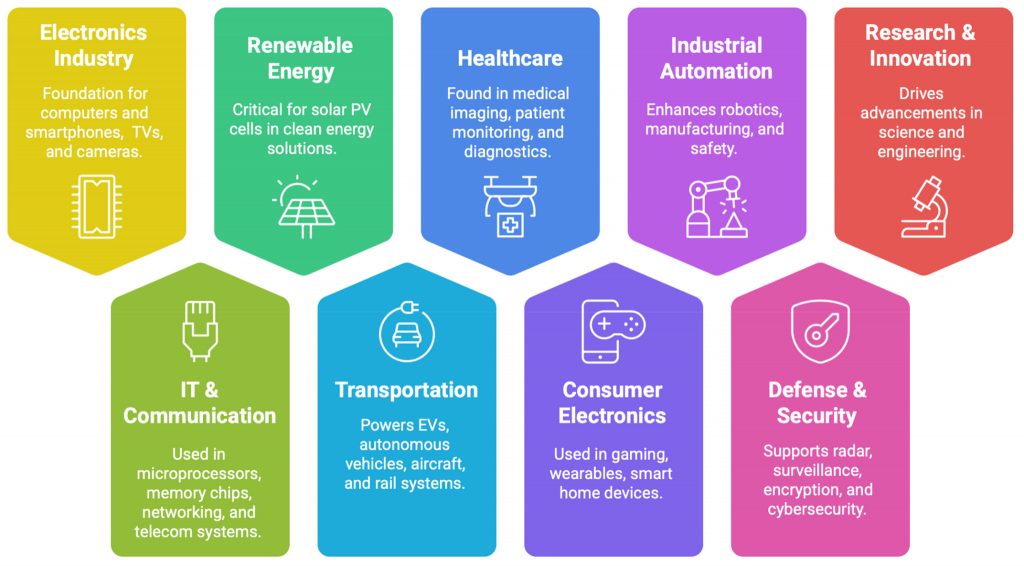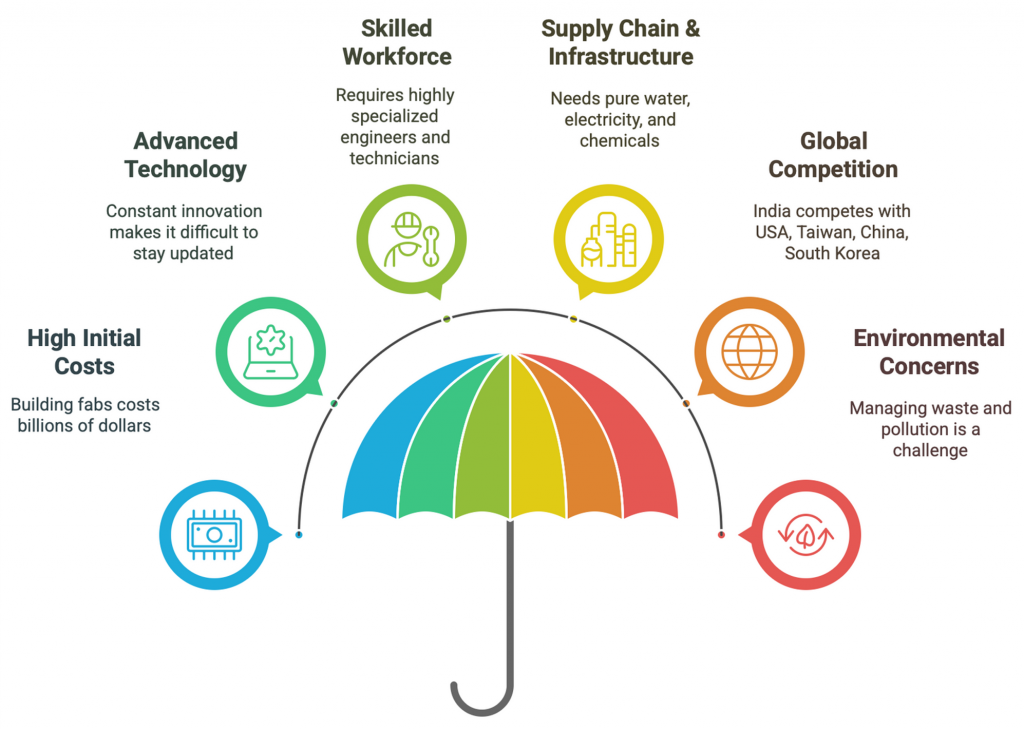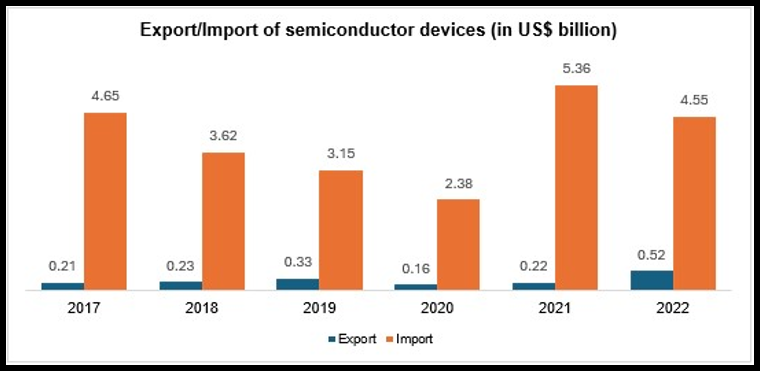Syllabus: GS3/Economy
Context
- India Semiconductor Mission (ISM), Tata Electronics, and Tata Semiconductor Manufacturing signed a Fiscal Support Agreement (FSA) for India’s first commercial semiconductor fab in Dholera, Gujarat.
More About the News
- Taiwan’s Powerchip is collaborating, focusing on automotive, computing, communications, and AI markets.
- This will attract fab construction companies from Taiwan to Gujarat.
- The $11 billion Tata-PSMC fab is one of five semiconductor projects approved under the India Semiconductor Mission (ISM).
- Four additional semiconductor projects are under construction, including by Micron, Tata, CG Power (with Renesas), and Kaynes Semicon.
- The agreement strengthens India’s self-reliance in semiconductor and display manufacturing.
What are Semiconductors?
- Semiconductors have electrical properties between conductors (metals) and insulators (rubber).
- They conduct electricity under certain conditions and act as insulators under others.
- Often made from silicon or germanium, semiconductors are also known as integrated circuits (ICs) or microchips.
- Doping involves adding impurities to change the material’s conductivity.
- Applications: Semiconductors are used in various electronic devices, including transistors, which function as switches or amplifiers.
- They are crucial in computers, cell phones, solar cells, LEDs, and integrated circuits.
Significance of Semiconductor Manufacturing

| India Semiconductor Mission (ISM) (2021) – It functions as a dedicated business division within the Digital India Corporation. – Objective: To develop a robust semiconductor ecosystem in India, reducing dependency on imports and strengthening technological self-reliance. – Government Support: The Indian government has committed 50% fiscal support for eligible project costs under ISM. – Global Collaboration: The mission encourages collaborations with international companies like Taiwan’s Powerchip and Micron Technology. PLI (Production Linked Incentive) Scheme – Encourages domestic chip manufacturing with 4%-6% incentives. SPECS (Scheme for Promotion of Manufacturing of Electronic Components & Semiconductors) – Supports electronic components & semiconductors |
Challenges in Semiconductor Manufacturing

Why is there an Increased focus on Semiconductors?
- Strategic Importance: Semiconductors are crucial for the economy, driving technology, defense, and industrial growth.
- Supply Chain Vulnerability: The 2021 chip shortage highlighted global dependence on a few key suppliers.
- Taiwan’s Dominance: Taiwan is the world’s largest chip manufacturer, controlling a major share of production.
- India’s Ambition: India aims to become a significant player in semiconductor manufacturing.
- Geopolitical Competition: Rising tensions with China are pushing countries to diversify chip production.

Way Ahead

Source: IE
Previous article
Antarctic Circumpolar Current (ACC) is Slowing Down Rapidly
Next article
RBI Announces Over US$21 Billion Liquidity Infusion